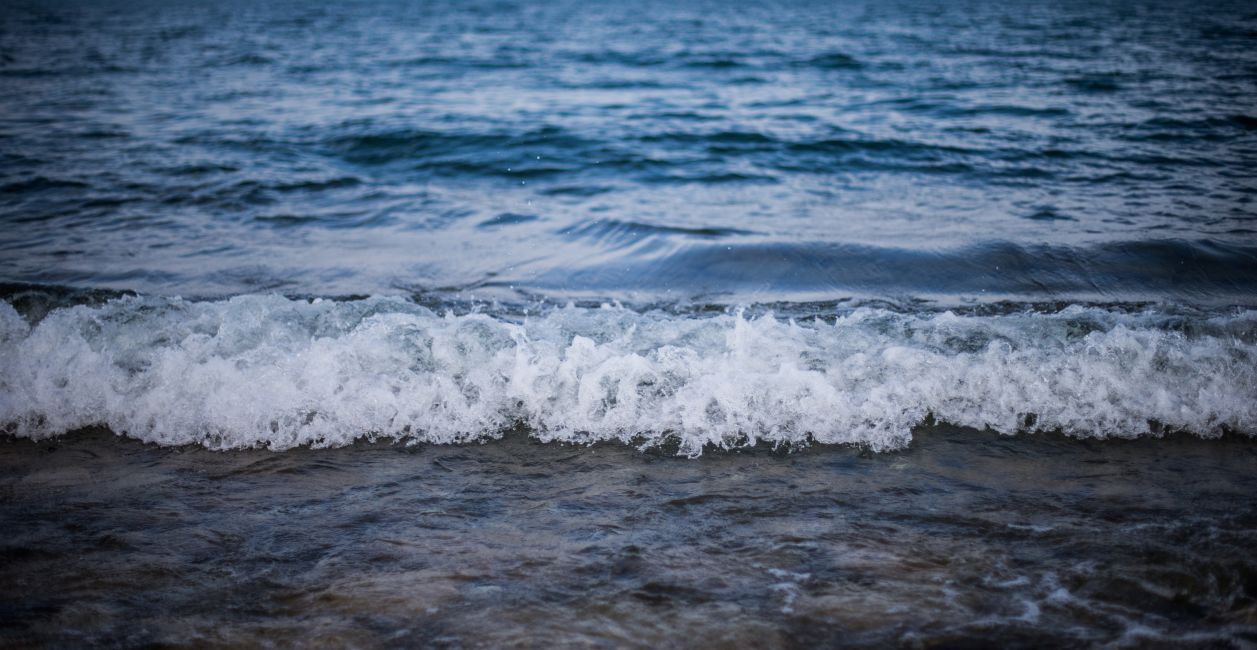
J-Term 2022 Blog: Greetings from Peru!
WMG/POL/MLA 675: The Role of Tourism and its Effect on Women and the Environment in Peru
January 17, 2022
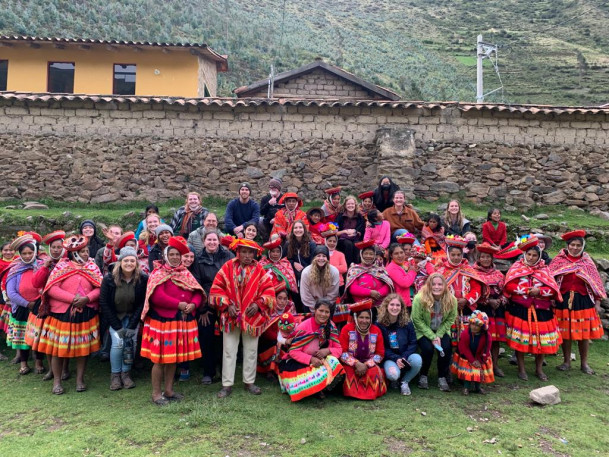
Hello from Peru! We have only been here for six days, and we have already experienced so much and had so many adventures. We started off our study tour with a day trip to Lima where we spent the day walking around the city and exploring places like Larco Mar, el Parque del Amor, and Iglesia Virgen de la Medalla Milagrosa (“Our Lady of the Miraculous Medal Church”).
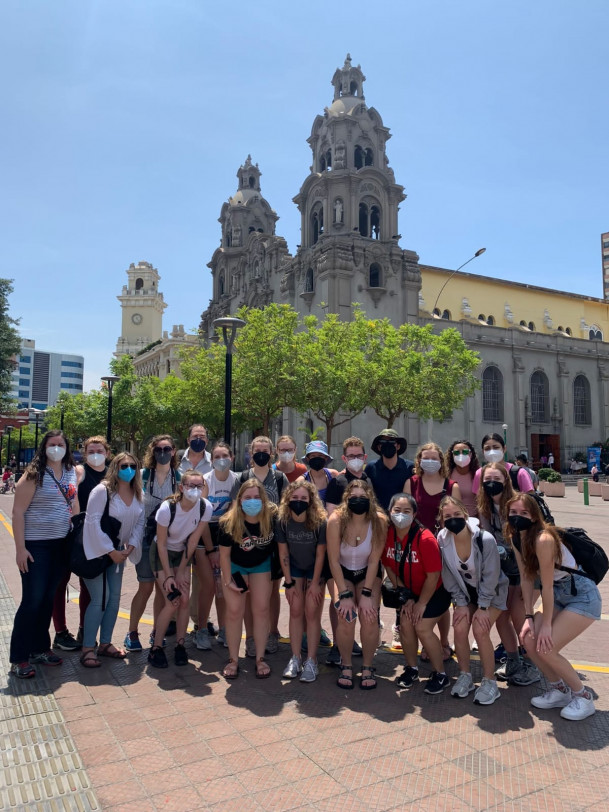
From there, we flew to Cusco in the southern part of the country where we visited an alpaca, llama, and huanaco farm. We had to drive up to 12,000 feet elevation to get there, but it was definately worth it because we got to pet and socialize with the animals there.
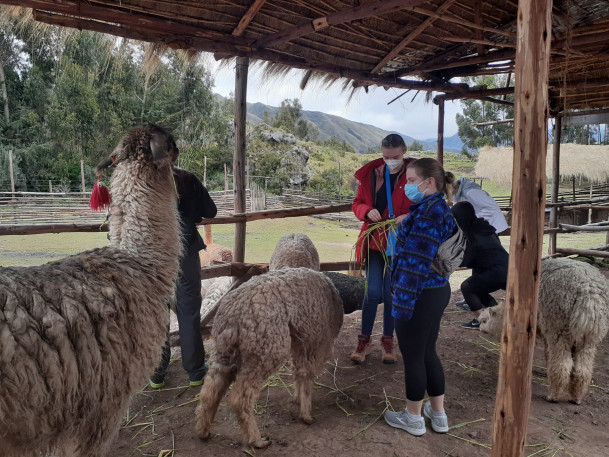

Because of the elevation, altitude sickness is very common especially among people who are not used to the elevation (which, coming from Carthage, was pretty much all of us). To help with this, Peruvians often drink Coca Leaf Tea which uses the leaves of coca plants and helps with headaches and nausea. I have been enjoying Coca Leaf Tea every morning with my breakfast, and although it is not like the tea I am used to at home, its favor is definitely growing on me.
One of my favorite sites that we visited was Ollantaytambo near Cusco. Ollantaytambo is known for Pachamama which is the spiritual Earth Mother figure in Peruvian culture. We got to learn all about the history of the Incas and the Spanish occupation. We also got to spend time with the locals there where we learned one of their styles of cooking called Pachamanca. It is literally a hole in the ground with hot rocks, potatoes, vegetables, and meat with layers of rocks, straw, paper, and dirt on top to keep the insides hot and cooking. It was my first time eating something cooked in the ground, but it was absolutely delicious!

Another highlight so far has been visiting the liquid salt mines in Marasal, Peru. The miners let about 5000 pots fill up with the saltwater from the natural springs and then let the water evaporate before extracting the salt. Not only was it very interesting to learn about the process of extracting salt, but it was one of the prettiest locations we’ve seen so far. We also got to spend a full day with Peruvian locals where they taught us how to weave, gave us gifts, ate with us, played music for us, and we even got to play a friendly game of soccer! At this point in our study tour, we all feel like a big family, and I can’t wait to experience all the other opportunities we will have in the next week.
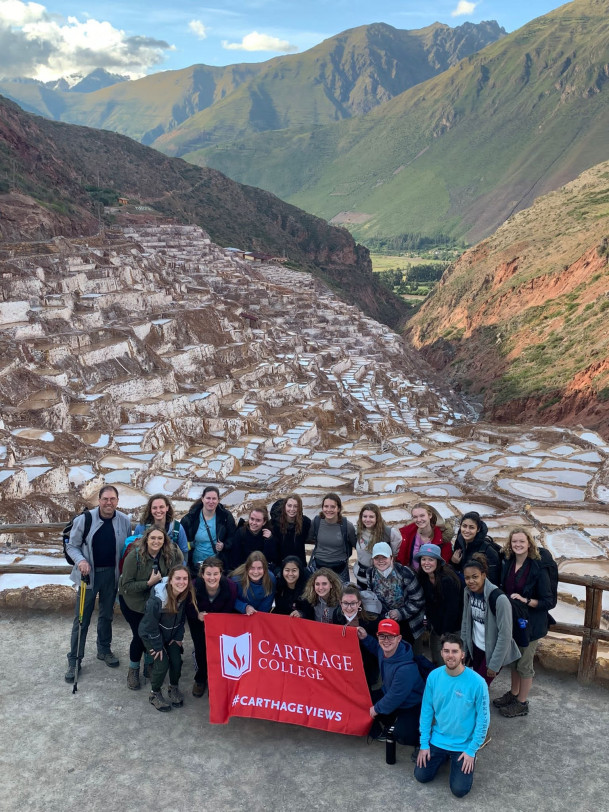
-Serena Richardson ’24
About the Peru Study Tour
THE TRAVEL DATES
Jan. 11-26, 2022
THE INSTRUCTORS
Modern languages Prof. Maribel Morales
Political science Prof. Jeffrey Roberg
AN INTRO
In this study tour, students will have the opportunity to examine the effects of tourism on multiple cultures within one country. The tour includes visits to the ancient Inca capital of Cuzco and the surrounding Sacred Valley, along with Machu Picchu. Ultimately this study tour will serve as an opportunity for students to examine how being “the other” may permanently change themselves, and provide a basis for them to understand their role as a global citizen.
